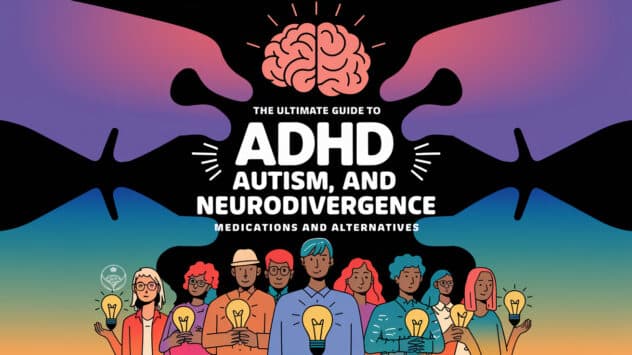Animal-Assisted Therapy for Autism: Can a Dog Be Your Therapist?
Ever wished for a therapist who listens intently, never interrupts, and thinks you’re the bee’s knees? Enter the world of animal-assisted therapy, where your counsellor might just have a wagging tail. Let’s have a look at animal-assisted therapy for Autism.
For individuals with autism, animal-assisted therapy offers more than just the joy of petting a furry friend. It’s about connection, support, and understanding in ways that traditional therapy might not provide.
Let’s delve into why animal-assisted therapy is gaining traction in the autism community and whether it’s time to consider a four-legged therapist.
Unlock peak brain performance with science-backed biohacks. Join free now & get your guide for just £4.99 (45% off)!

What is Animal-Assisted Therapy?
Animal-assisted therapy involves incorporating trained animals into therapeutic settings to enhance emotional and psychological well-being. These animals, often dogs but also horses, cats, and even dolphins, are trained to provide structured support, from reducing anxiety to improving communication.
Why Does It Work Well for Individuals with Autism?
Animals often make more sense than people. They don’t judge, don’t require eye contact, and are perfectly content with silence. This non-judgmental presence can be incredibly comforting for those with autism.
Sensory Regulation Without Judgment
A dog leaning against you when you’re anxious provides deep pressure therapy, a technique beneficial for many with autism. Therapy animals offer predictable, calming sensory input through petting or simply being present.
Emotional Support Without Words
Animals don’t need small talk. They offer companionship without the complexities of human interaction. Feeling overwhelmed? A therapy dog senses it and offers comfort without uttering a word.
Social Interaction Without the Exhaustion
Interacting with animals provides social engagement without the typical pressures. They help individuals with autism feel connected without navigating the often confusing realm of human social cues.
Structure and Routine
Caring for a therapy animal introduces routine. Feeding, walking, and grooming tasks add structure to the day, which can be beneficial for those who thrive on predictability.
Natural Mood Boosters
Interacting with animals releases dopamine and oxytocin, chemicals that enhance mood and promote emotional stability. Unlike other mood enhancers, animals don’t come with side effects, except perhaps the occasional fur on your clothes.
How to Get Started with Animal-Assisted Therapy
Interested in exploring this therapeutic avenue? Here’s how:
- Certified Therapy Animal Programs: Seek out organisations that train and certify therapy animals specifically for individuals with autism.
- Equine Therapy: Working with horses has shown benefits in emotional regulation and sensory integration.
- Consult a Professional: Speak with a therapist experienced in animal-assisted therapy to determine the best approach.
- Volunteer Opportunities: If owning a pet isn’t feasible, consider volunteering at animal shelters to experience the benefits without long-term commitment.
Is a Therapy Animal Right for You?
If you find solace in animals and seek non-judgmental support, a therapy animal might be a valuable addition to your therapeutic journey. Whether it’s a trained therapy dog or your own pet, animals offer a unique form of companionship that’s hard to replicate.
And if anyone questions your need for a therapy animal, just explain it’s “prescribed emotional support.” They don’t need to know it’s also an excuse to have a furry friend by your side.
Join Our Community
For more insights and discussions on autism and innovative therapies, join our community, where we explore various approaches to support neurodivergent individuals.








Lol, a dog as a therapist? Mine definitely doesn’t take appointments, but he’s probably the best support I’ve got. He doesn’t judge when I lose track of time or forget what I was doing, just sits there like ‘you good?’. It’s actually mad how much just having him around helps. Would love to see more on how different animals help in different ways!